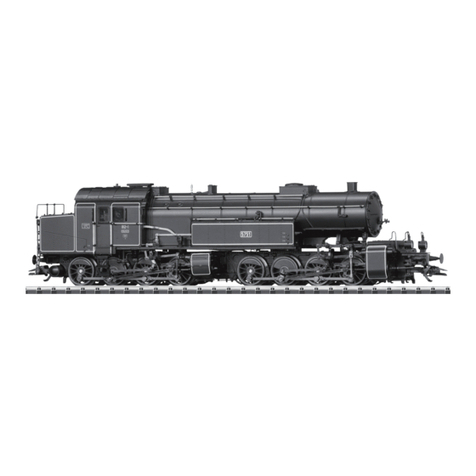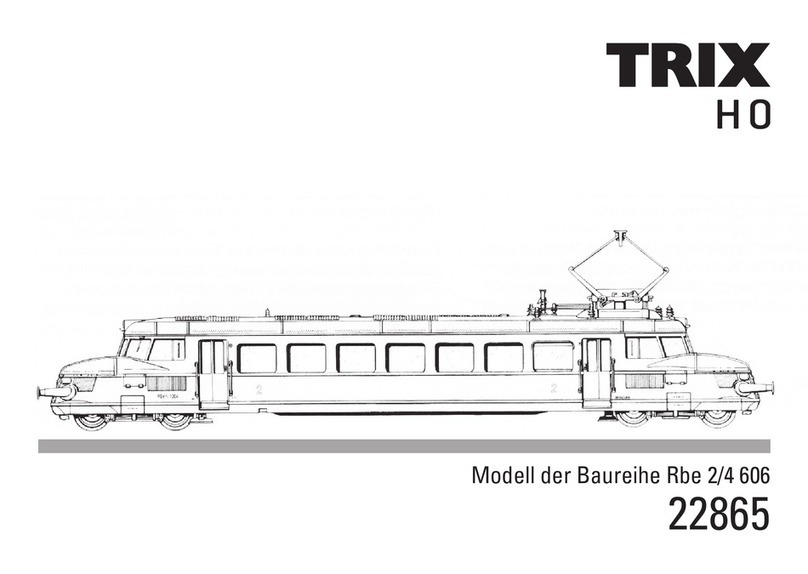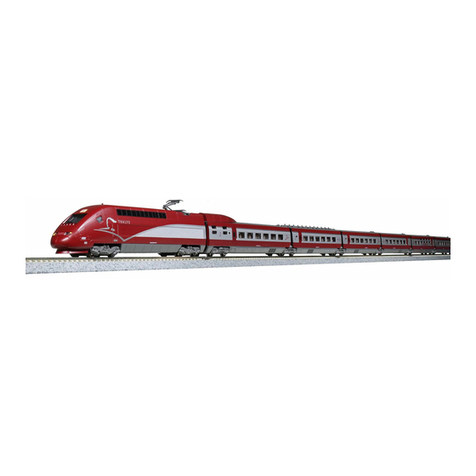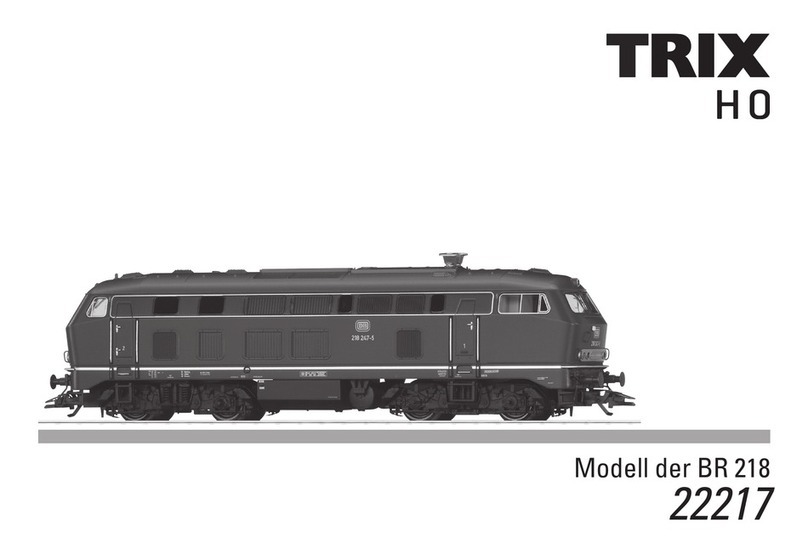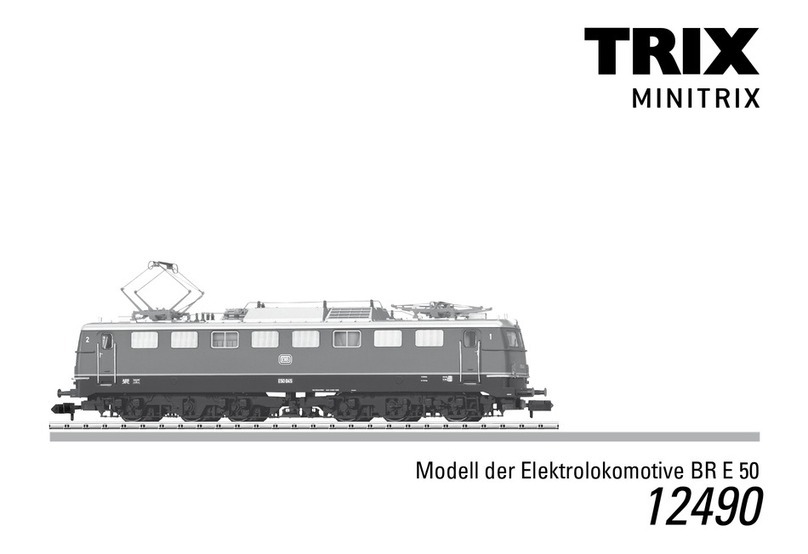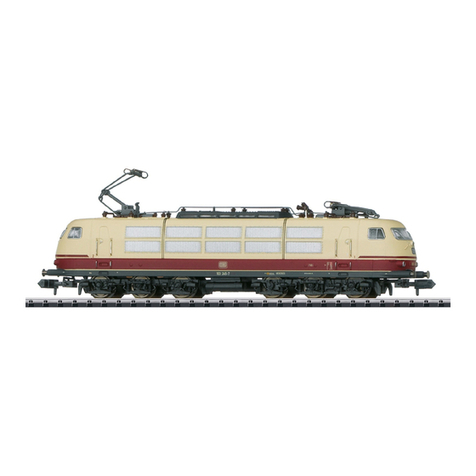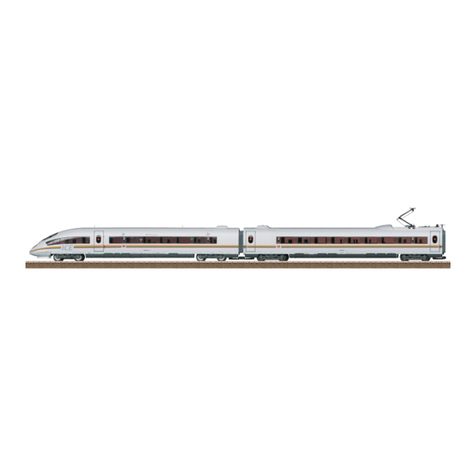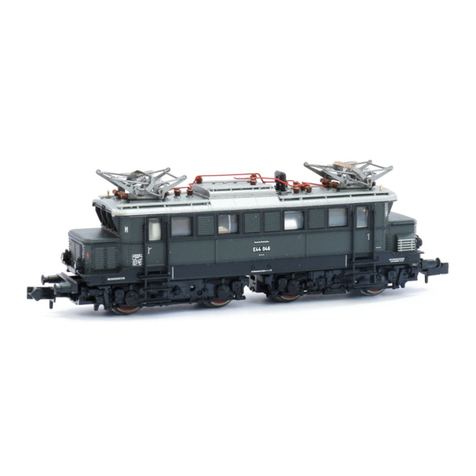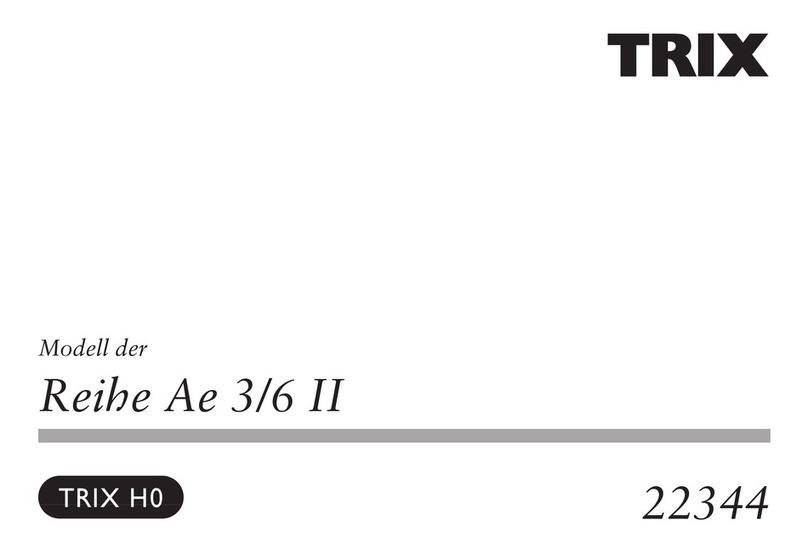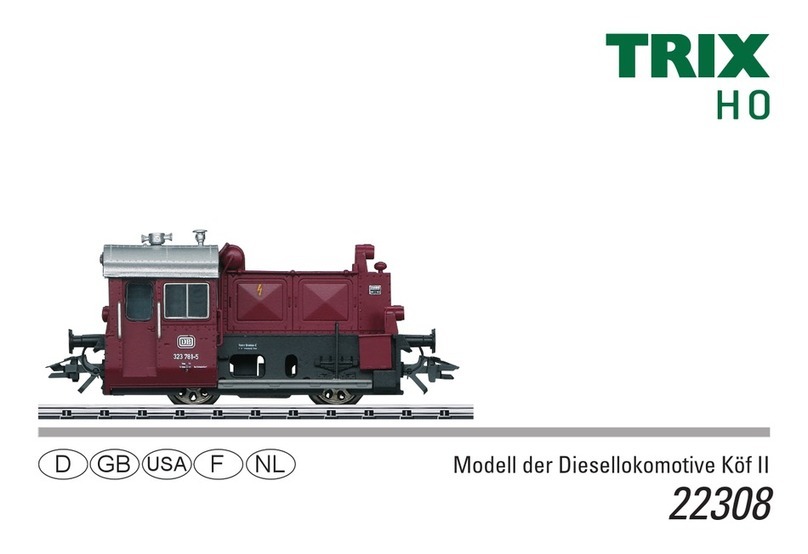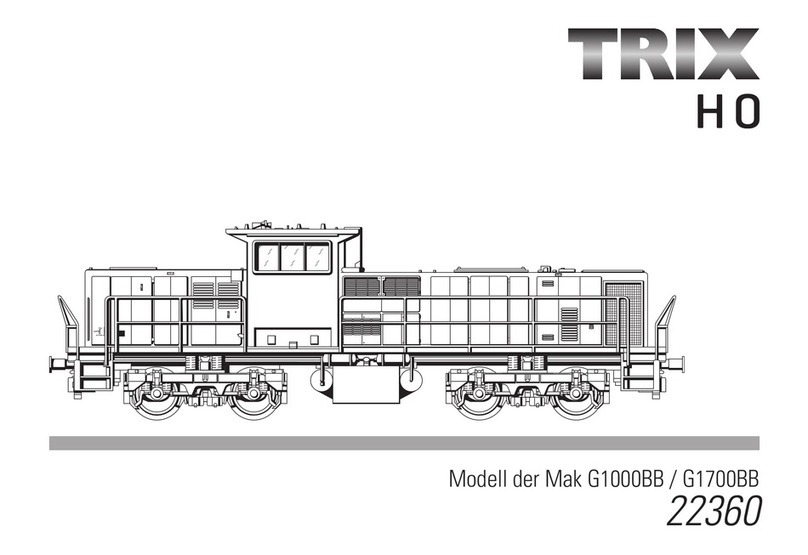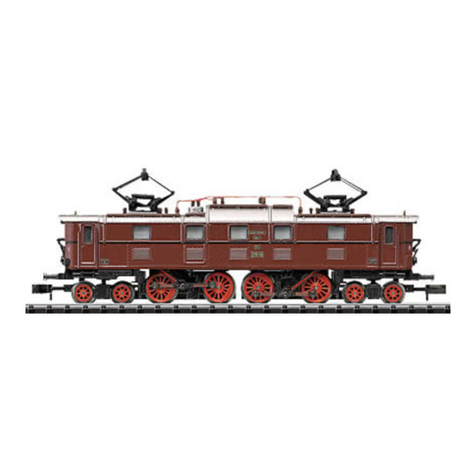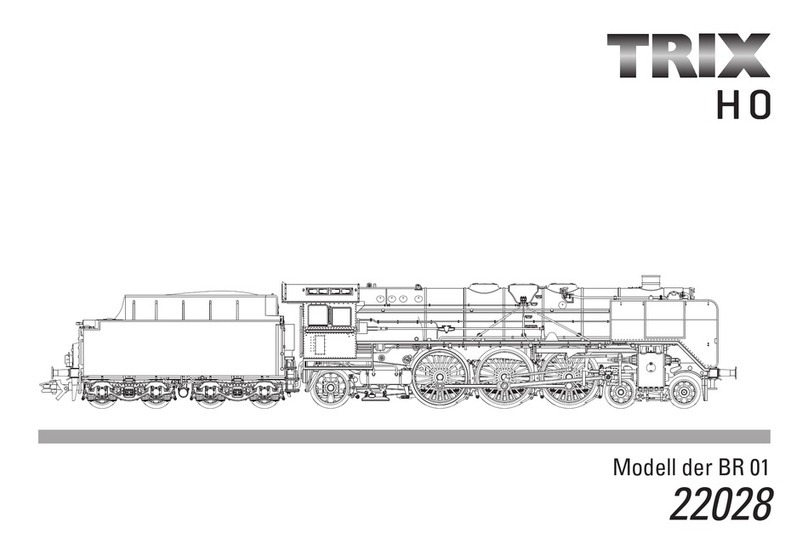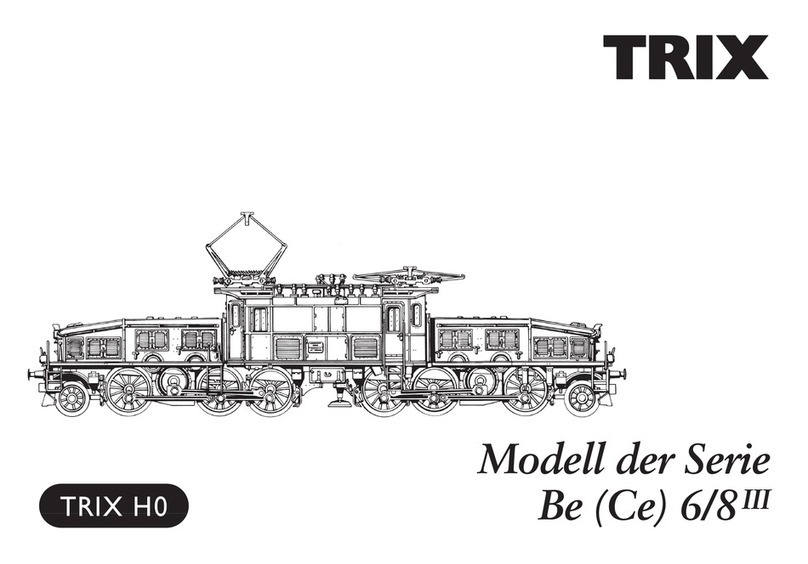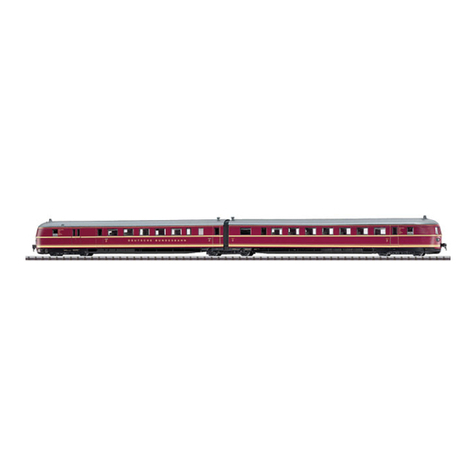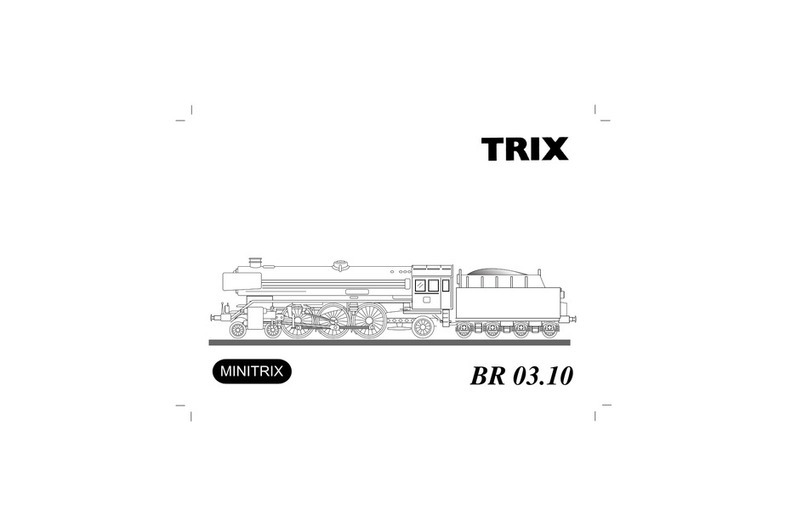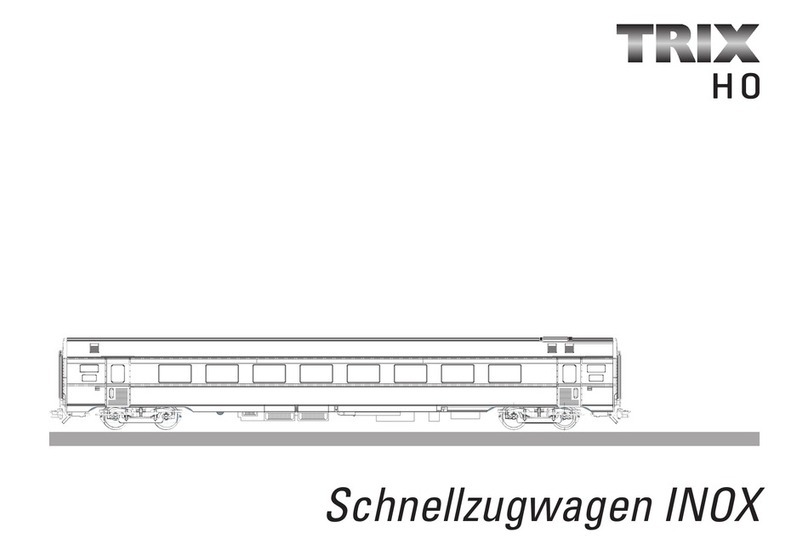5
Informations concernant la locomotive réelle :
Les Chemins de fer Fédéraux suisses (CFF) ont acquis les six
premières locomotives de la série Re 4/4 II en 1964. Avec un
débit horaire de 4.650 kW, les locomotives étaient les ma-
chines à quatre essieux les plus puissantes à cette date. La
vitesse maximum atteinte était de 140 km/h. Les six premières
locomotives ont été suivies de 270 unités supplémentaires
entre 1967 et 1986.
Les Re 4/4 II des CFF sont utilisées partout en Suisse et sup-
portent toujours l’essentiel du frafic voyageurs et marchan-
dises de la Suisse.
C’est en 1985 que furent livrées les dernières locomotives de
la série Re 4/4 II aux CFF. Elles étaient équipées d’un nouveau
dispositif d’éclairage avec phares rectangulaires et phares
de route commutables.
Peu de temps après, la série Re 4/4 II reçut également la prise
de courant frontale UIC qui permet de se raccorder aux fils
pilotes et aux lignes de communication normalisés des trains
voyageurs. A ceci s’ajouta une montée latérale équipée
d’une main courante pour faciliter l’accès au raccordement.
C’est avec ce nouveau visage que se présentent aujourd’hui
la plupart des locomotives de ce type.
Afin d’assurer le transport ferroviaire interfrontalier, plus de
20 locomotives ont subi à partir de 2002 diverses modifica-
tions techniques (pantographes, Indusi, etc.) et ont, à cet
effet, été versées dans la série Re 421.
Informatie van het voorbeeld:
De Schweizerische Bundesbahnen (SBB) schaffen in 1964 de
eerste zes lokomotieven van de serie Re 4/4 II aan. De ma-
chines waren met een uurvermogen van 4.650 kW de tot dan
toe sterkste vierassige lokomotieven. De maximum snelheid
is 140 km/h. Na de eerste zes lokomotieven volgden van 1967
to en met 1986 nog 270 exemplaren.
De Re 4/4 II van de SBB wordt in geheel Zwitserland ingezet
en vervoert het leeuwedeel van het goederen- en personen-
verkeer in Zwitserland.
In 1985 werden de laatste locomotieven van de serie Re 4/4 II
aan de SBB geleverd. Ze waren met een nieuwe verlichtings-
installatie met rechthoekige schijnwerpers en inschakelbaar
spotlicht uitgerust.
Spoedig daarna kreeg ook de serie Re 4/4 II de UICcontact-
doos op het front die de aansluiting van genormaliseerde
regel- en communicatieleidingen in reizigerstreinen moge-
lijk maakt. Daarvoor is ook een loopplank aan de zijkant met
handgreep aangebracht, die de aansluiting beter toeganke-
lijk maakt. Met dit veranderde uiterlijk laten deze meeste locs
van dit type zich tegenwoordig zien.
Voor het grensoverschrijdende verkeer werden vanaf 2002
meer dan 20 locomotieven met verschillende technische
wijzigingen (pantograaf, indusi magneten e.d.) uitgerust en
omgenummerd naar serie Re 421.
